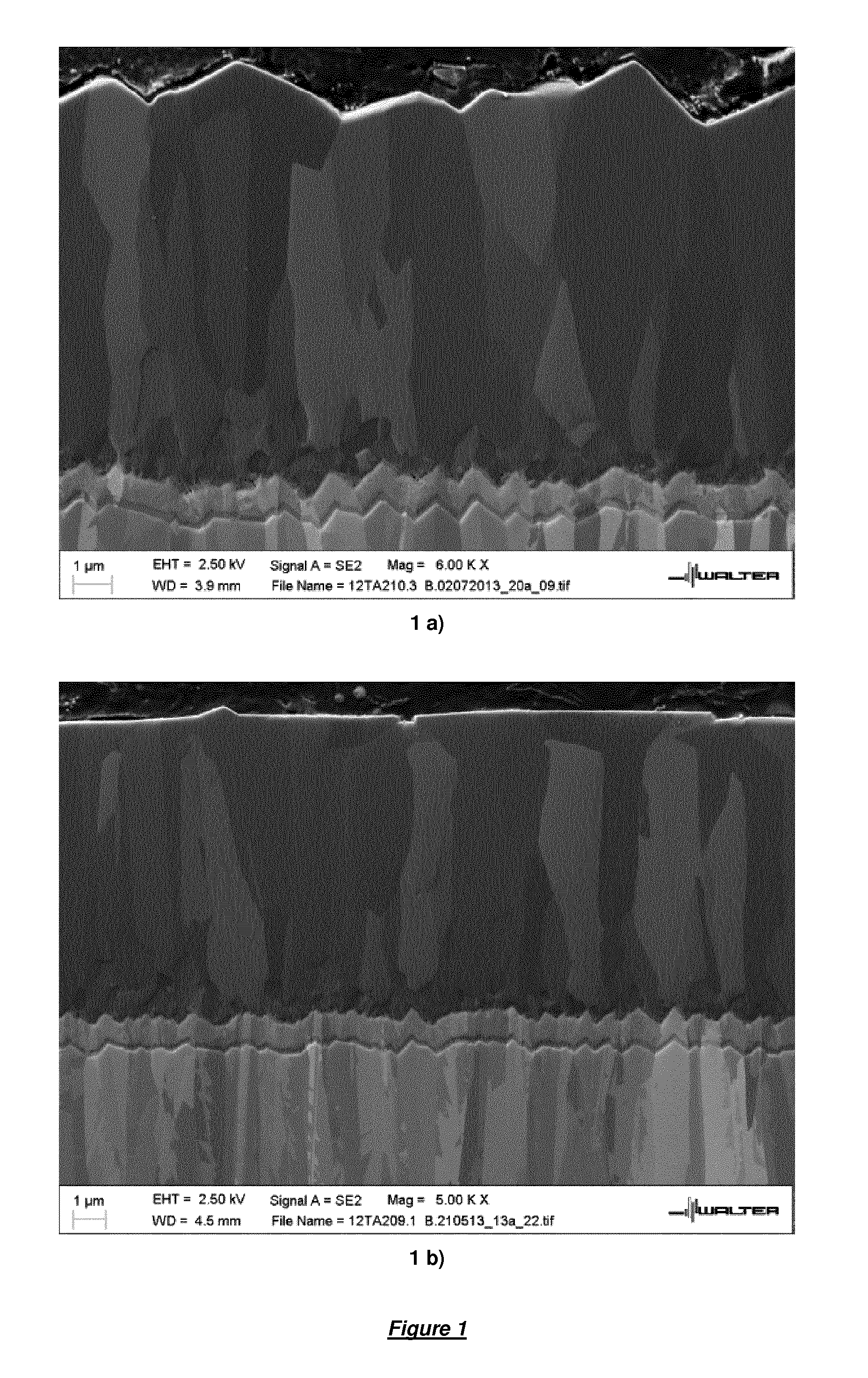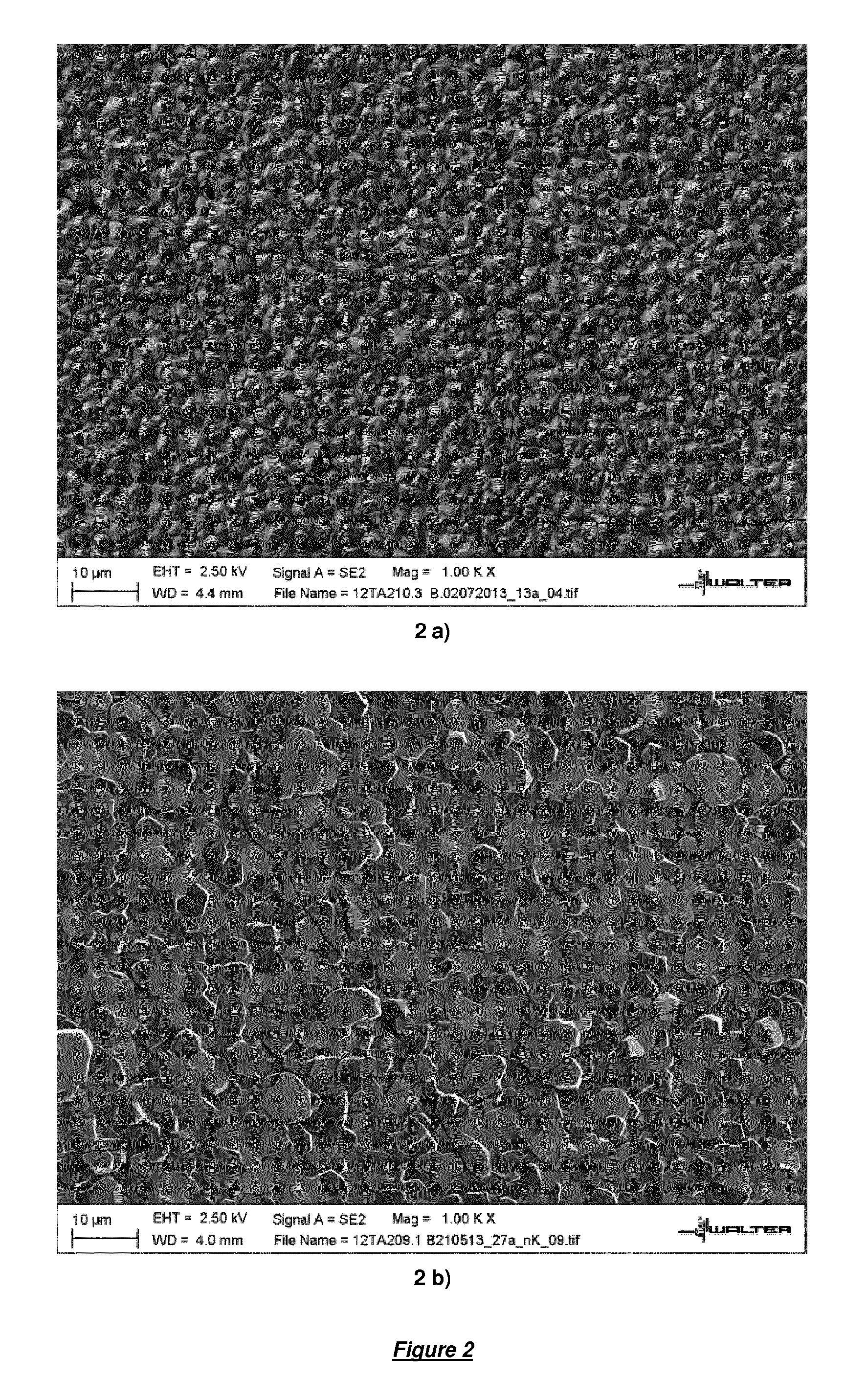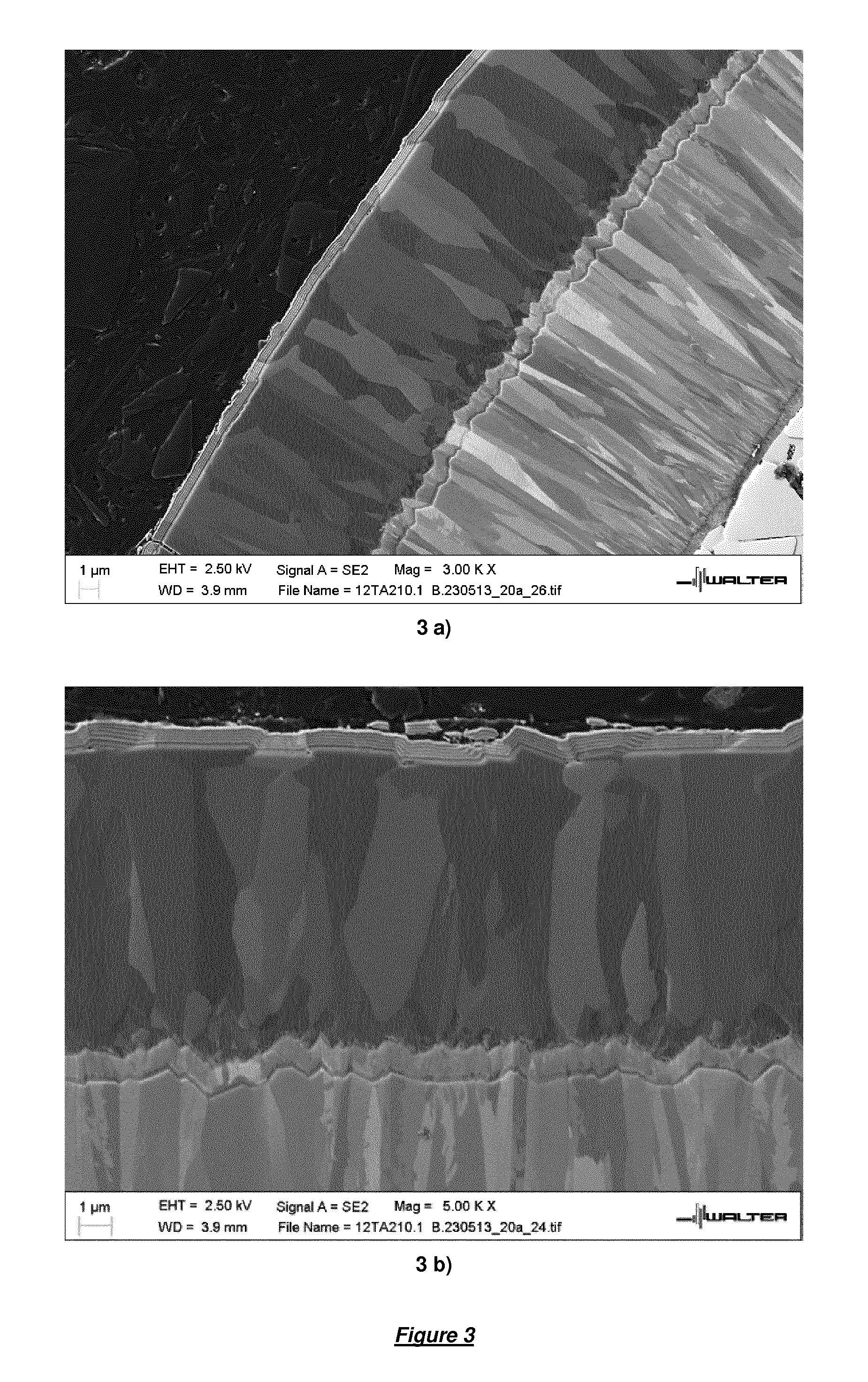Alumina coated cutting tool
- Summary
- Abstract
- Description
- Claims
- Application Information
AI Technical Summary
Benefits of technology
Problems solved by technology
Method used
Image
Examples
example 1
Alumina Layer According to Prior Art (Coating 1—Comparative Example)
[0103]The alumina deposition on the pre-coated substrates, as described above, was started by introducing a reaction gas mixture of 2.5 vol-% AlCl3, 4.1 vol-% CO2 and balance H2 at a temperature of 1000° C. and a pressure of 66 mbar. The reaction g as components were introduced simultaneously. After 2 min, HCl in an amount of 2.5 vol-% was added to the reaction gas mixture flowing into the reactor. After another 8 min H2S in an amount of 0.33 vol-% was added to the reaction gas mixture flowing into the reactor.
[0104]The deposition conditions were maintained for about 8 hours to obtain an about 8 μm thick α-Al2O3 layer. In a visual inspection the α-Al2O3 layer appeared dark and dull. The coating was analysed by roughness measurements, cutting tests, SEM and XRD.
example 2
Alumina Layer According to the Present Invention (Coating 2)
[0105]The alumina deposition on the pre-coated substrates was carried out as described above for example 1 with the exception that the deposition time of the α-Al2O3 layer was 6.5 hours instead of 8 hours. After 6.5 hours deposition time, the process parameters were changed to “second process conditions” that were known to favour a preferred crystal growth along the crystallographic direction of the α-Al2O3 layer. In the “second process conditions”, the composition of the reaction gas mixture was 1.5 vol-% AlCl3, 5.7 vol-% CO2, 7.5 vol-% HCl, 0.05 vol-% H2S and balance H2. The temperature was maintained at 1000° C., but the pressure was changed to 150 mbar. The deposition time under the “second process conditions” was 1.5 hours, and the total thickness of the thus obtained α-Al2O3 layer was 8 μm, as in example 1. In a visual inspection the α-Al2O3 layer appeared dark but shiny. The coating was analysed by roughness measure...
example 3
Top Coating 1
[0107]The processes of examples 1 and 2 were repeated, but, additionally, on top of the α-Al2O3 layers a top coating was deposited. The top coating was a 1.1 μm thick multilayer composed of 5 alternating sub-layers of TiN and TiCN terminated by TiCN.
[0108]The samples are designated as coating 3.1 (=according to prior art example 1 plus top coating) and coating 3.2 (=according to inventive example 2 plus top coating).
[0109]The α-Al2O3 coatings 3.1 and 3.2 were analysed by SEM. Cross-section microphotographs of coating 3.2 on the cutting edge and on the rake face, respectively, are shown in FIGS. 3a) and 3b). The cross-sectional images of FIGS. 3a) and 3b) clearly show the extreme smoothness of the surfaces of the α-Al2O3 layer, as well as of the top coating. A cross-section microphotograph of coating 3.1 according to the prior art is shown in FIG. 4. It clearly shows the significantly rougher surface due to the different faceting of the α-Al2O3 grains.
PUM
| Property | Measurement | Unit |
|---|---|---|
| Temperature | aaaaa | aaaaa |
| Temperature | aaaaa | aaaaa |
| Length | aaaaa | aaaaa |
Abstract
Description
Claims
Application Information
 Login to View More
Login to View More - R&D
- Intellectual Property
- Life Sciences
- Materials
- Tech Scout
- Unparalleled Data Quality
- Higher Quality Content
- 60% Fewer Hallucinations
Browse by: Latest US Patents, China's latest patents, Technical Efficacy Thesaurus, Application Domain, Technology Topic, Popular Technical Reports.
© 2025 PatSnap. All rights reserved.Legal|Privacy policy|Modern Slavery Act Transparency Statement|Sitemap|About US| Contact US: help@patsnap.com



